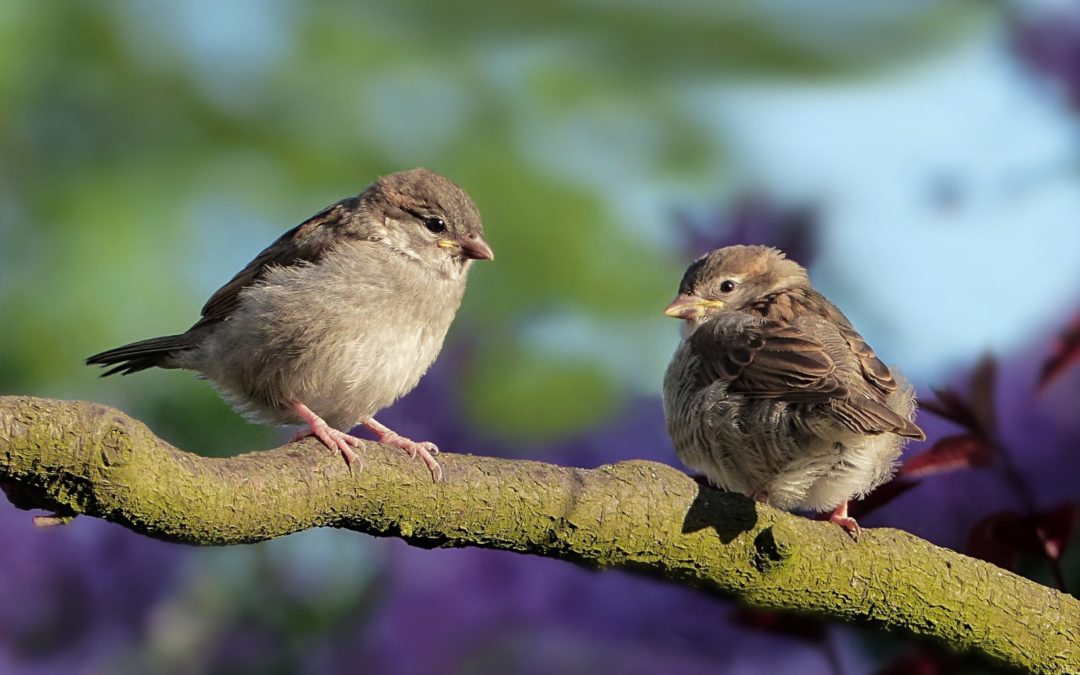Public interest in birds has surged throughout the pandemic. People have discovered the joy of watching birds at their feeders, going for a walk in a nature sanctuary, or simply waking up to their singing. With this increased interest has come a greater understanding that our bird populations are struggling, and that action is needed to halt the declines.
Bird conservation includes establishing protected areas, such as the Victoria Harbour Migratory Bird Sanctuary. Thousands of birds use this and other protected areas on southern Vancouver Island. However, birds don’t see park boundaries, and make use of suburban and even urban environments. These areas can be valuable to birds but also hazardous, because of the dangers posed by non-natural features like buildings. Window collisions kill between 16-42 million birds each year in Canada, and up to a billion in North America. Most are songbirds, but larger birds such as hawks and owls are also vulnerable.
There are two main reasons birds collide with glass. They see reflections of plants and trees as real, and fly towards them, only to collide. When birds can see through glass to the other side, as with glass walkways or railing panels, they collide when they try to fly through the glass to reach the other side, but don’t see the deadly obstacle in their way.
We can prevent collisions by making glass visible to birds, and bird-friendly design standards can show us how. Pioneered in Toronto, these standards provide architects and developers with guidelines for designing buildings that are safe for birds. Methods can include using patterned glass, reducing unnecessary glass, decreasing light pollution, and avoiding hazardous design features. There is little to no extra cost associated with following these standards, which often align with other sustainability guidelines. Cities throughout North America, from Ottawa to New York, have already adopted bird-friendly design standards – isn’t it time Victoria joined them?
Consider a recent local example of how bird-friendly design standards could make a difference in Victoria: the recently-approved Telus Ocean building. The design has caused outcry for many reasons, but the danger to birds has been a central feature. The design illustration shows large expanses of reflective glass next to trees, in an area close to Beacon Hill Park and other green space. Rooftop gardens will be surrounded by additional glass, including transparent railing panels. It is, in short, a “perfect storm” for bird collisions.
While the building’s developer has promised that birds have been considered in the design, they have provided scant information on exactly what measures will be taken, and on what areas of the building, to prevent collisions. Nor is there any guarantee that the methods they choose will work, as they don’t have to follow any proven standards. In fact, Diamond Schmitt, the architectural firm that designed the Telus Ocean building, has a history of failing to follow standards. They claimed that the design of the renovated National Arts Centre in Ottawa would be bird friendly, but the unproven methods they chose were ineffective, and the ground outside this landmark building is often littered with the bodies of birds. With this precedent, it is no surprise that concerns remain about bird collisions at the Telus Ocean building. If this development is truly committed to protecting birds, they will commit to following bird-friendly design standards.
Without these standards, new buildings will continue to be built with features that will kill birds. Thankfully, this may soon change: Victoria City council will soon be voting on revisions to the Downtown Core Area Plan Design Guidelines, including bird-friendly design guidelines. Victoria residents can support this measure by asking their councillor to support bird-safe measures.
Bird-friendly design guidelines don’t apply to single family residences, which are responsible for a considerable portion of collisions. Homeowners, however, can make their houses safe for birds using resources available at BirdSafe.ca or SafeWings.ca. Whether you’re urging developers to build bird-friendly, asking government to support design guidelines, or preventing collisions at your front window, our feathered friends will thank you for really making their future friendly!
Andrew Harcombe is a retired Conservation Biologist, member and Past President of the Rocky Point Bird Observatory, Victoria, BC.
With input from Willow English (Avian biologist with Safe Wings)
Photo by Jacques Sirois

I made similar points in comments to Victoria council prior to their approving the Telus building, but your comments are much more complete than mine were. Thank you! I saw the developer’s “promise” to incorporate bird-friendly design in the staff report but didn’t see a requirement to follow through and was unaware of the proponent’s poor track record.
Given the flood of proposals for high-rises in the Capital Region, I strongly believe every municipality in the region should have bird-“friendly” design requirements for new buildings of a certain minimum size. Not just Victoria. Saanich is currently developing their environmental policy framework, including a biodiversity strategy (along with updating their urban forest strategy). A bird-friendly design requirement (not guideline) for building approvals is an obvious piece of a meaningful urban biodiversity strategy.
I have been involved with bringing attention to this issue and I am so pleased that this piece has been published. Thank you CreativelyUnited.org. Excellent comments Kevin Brown.
* Important Update*: February 10 is the date of the vote.
Contact your Victoria City Council and pass on to your contacts.
https://www.victoria.ca/EN/main/city/mayor-council-committees/contact-mayor-council.html